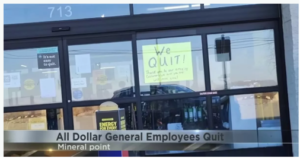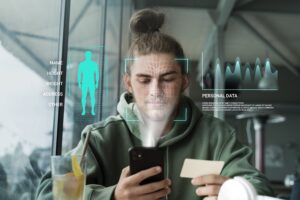For well over 100 years, businesses leaders have made decisions based on what is right for the business. Business profitability first. Everything else second. Why not buy cheap chairs for the restaurant? Why not focus on the efficiency of the call center instead of delivering better customer outcomes? Much of this thinking comes from entrenched systems and processes. Decision makers focused on what they could measure. But they only measured what they could see. The customer was rarely part of the equation.
Now, customers are front and center in almost every business ecosystem. With advances in technology, digital and mobile, customers demand more attention—and more value—from the brands they choose. This quick about-face is forcing business decision makers to include customer outcomes in their thinking. Whether the business is B2B, B2C, or B2B2C, today’s game is all about finding ways to enhance the customer and employee experiences while delivering the right business metrics at the same time.
It’s no easy feat. Finding the right data to track comes first, but most of it lives outside of the business. Much of it is relevant for only minutes in the social spaces. Deepening the level of understanding of your customer (beyond demographics) comes next. Making decisions that create value for customers and for the business at the same time require a whole new way of processing and thinking. To deliver more customer value, business and experience designers must learn how customers want to interact with the brand, which preferences to capture, and how to track situations customers face. These information needs are decidedly different than the tools that have served business well for the last 100 years.
The good news is – there is a way! I had the opportunity to peek at the future when I attended the CRM 2016 event produced by SAPInsider at the Las Vegas Convention Center in March as an analyst (no fee, no favors). There, I met with dozens of futurists, analysts, makers, technologists, the company’s top management and many SAP clients.
The first thing I learned was the term ‘Always On’. Every business needs a digital version of itself to compete. An ‘Always On’ digital business sense and responds to customers’, prospects’, and suppliers’ requests 24×7. It works without day workers completing repetitive tasks. It customizes products and service delivery. Organizations that aren’t building these foundational digital capabilities risk becoming irrelevant. ‘Always On’ is the new admission price for doing business in today’s global and hyper-connected economy—regardless of an organization’s size.
Where ‘Always On’ gets commercially interesting is when business leaders use it go beyond today’s basics of offering the same services. Introducing breakout, game-changing capabilities that draw attention for their brands and earn profits for the business is the focus, not incremental gains.
For years, business leaders have strived to make their businesses more capable and more efficient at the same time. But, IT often became the choke point and many great ideas stayed on the drawing boards. Until now. In the ‘Always On’ enterprise, IT is the enabler.
The next part will describe two ideas/tools that make an ‘Always On’ enterprise work. It is going to sound a little technical (because it is technical)
Underneath the idea of ‘Always On’ are technologies that coordinate smaller processing tasks into bigger, more valuable business and customer outcomes and provide faster access to data.
- Micro Services – ‘pieces’ of larger applications delivered as smaller, discrete services. Each runs its own process in parallel or in tandem with other small services. This ‘electronic ecosystem’ allows for these smaller services to connect easily with each other to provide more personalized outcomes for individual customers.
- In-Memory Services – let data live and work in memory (think RAM) instead of through a complex series of calls to various types and locations of data. This means that the micro services can ‘talk to each other’, sifting through hundreds of possibilities to find the best way to solve a customer’s problem in near real-time.
This is right-here, right-now technology championed by SAP, Oracle, IBM, and others that allows companies and their computers to do what consumers want them to do. Compare this to the usual forcing of unwanted processes on consumers to do what the business’s processes dictate.
There were numerous real-world examples:
- Bentley Systems (a software company that supports companies that create and manage much of the world’s physical structure, thin bridges, roadways, airports, power plants, etc.). The customer experience improved greatly when every salesperson got in-context access to all pertinent customer information. More relevant and more meaningful conversations with clients ensued which improved lead-to-cash cycle times and lowered total cost of ownership.
- PrimeSource Building Products (roofing, sheeting, fasteners, etc.). Their challenge was that the distribution centers used a functional structure whereas the sales departments used a matrix structure. That doesn’t make it easy on IT—or for the customer experience. Getting a 360º view of the customer, each person who touched the customer (or their record) could make better decisions in context. Bottom line: time to serve went down and customer service improved. More sales and service calls could be handled successfully ‘lower’ in the org chart, handling costs between departments dropped, and time available for outgoing sales and service calls increased.
My SAPInsider experience and a new understanding of microservices and in-memory services has already been especially helpful to me as a business strategist and experience designer. I work with both front-end experience and the back-end operations which support them. I am told that suggesting ideas that cross organizational boundaries is too complex and involves too much political risk. With the new operational paradigm of ‘Always On’, I can ask valuable ‘What If’ questions that create value (for customers and for the business), like:
- What if—You could coordinate services between departments? Like scheduling, service, billing, shipping, and so on.
- What If–You could turn self-service into full-service?
- What If – You could ask to have an item personalized, sent to a specific location, with or without a self-recorded video from the gift-giver included?
‘Always On’. Now, this what I call customer experience. And, it’s here today!






